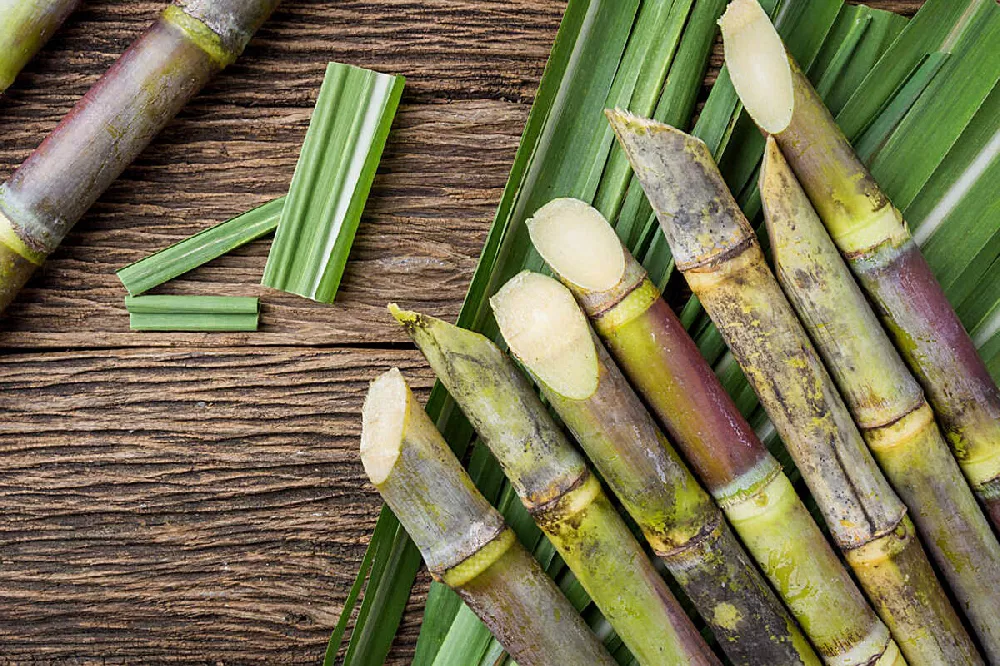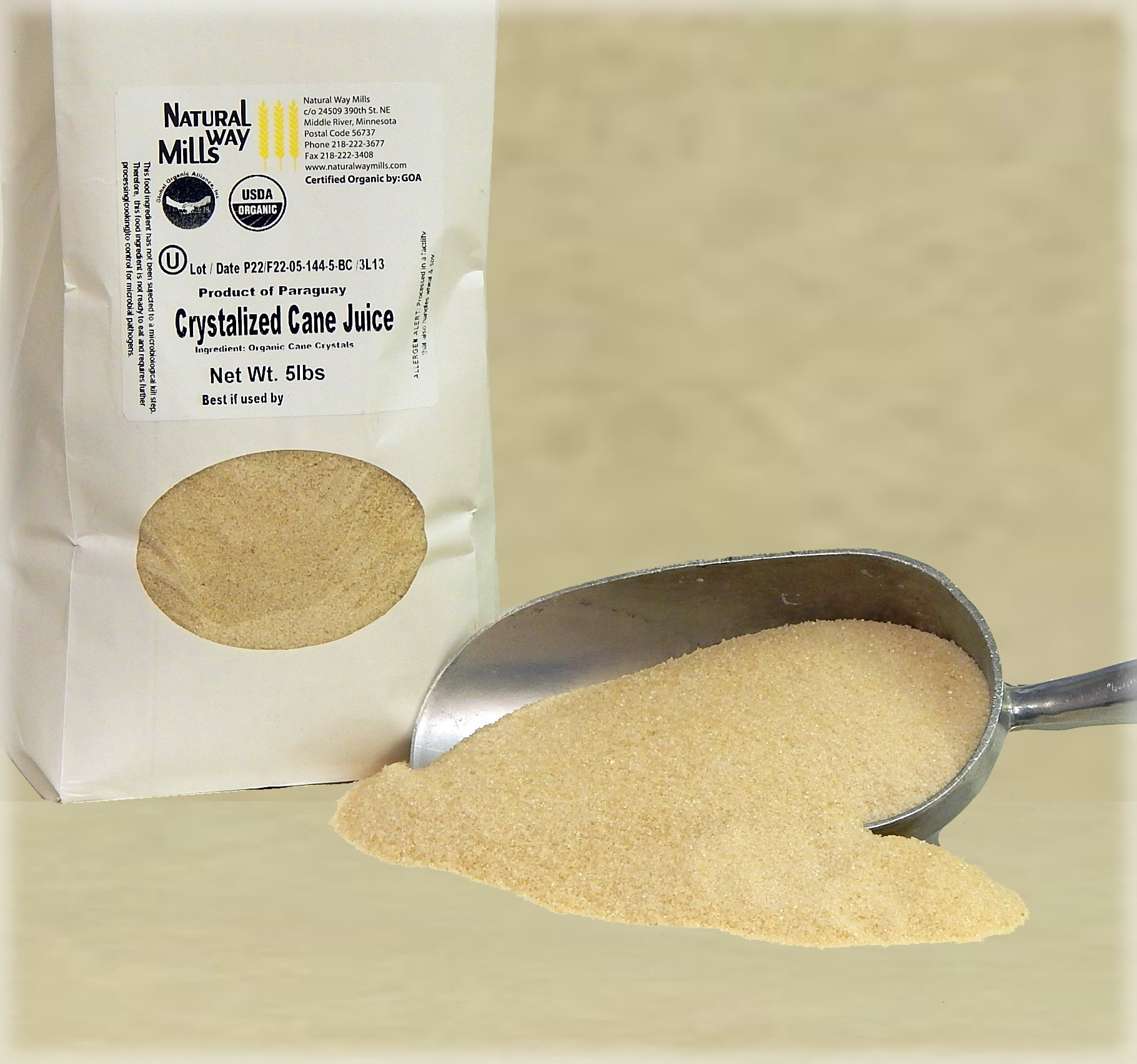Natural Sugars Derived from sugar cane products That Define Culinary Experiences
The Comprehensive Trip of Sugar Cane: Understanding Materials and Production Methods
The trip of sugar walking stick is a complicated procedure that begins in exotic regions with optimal growing problems. Farming practices are designed to make the most of return and sustainability. Gathering methods range from standard hand-operated methods to modern-day mechanical techniques. After harvest, sugar cane undergoes different processing phases to transform it into granulated sugar. This expedition reveals not just the ins and outs of production however likewise the wider effects for international markets and the atmosphere. What exists yet initial improvement?

The Background of Sugar Cane Cultivation
Although sugar walking cane farming go back countless years, its beginnings can be traced to the tropical regions of Southeast Asia, where early farmers initially identified the plant's pleasant sap. This exploration caused the farming of sugar cane as a staple plant, gradually spreading out to India and the Middle East. By the very first millennium advertisement, sugar cane was being cultivated in these regions, where methods for extracting and fine-tuning sugar were developed.The plant gained prominence in Europe during the Campaigns, as returning soldiers brought expertise of sugar production back home. By the 15th century, the establishment of sugar ranches started in the Caribbean, driven by the demand for sugar in Europe. The transatlantic slave labor fueled this growth, as enslaved labor was made use of to optimize production. Over centuries, sugar cane growing developed, affecting economic situations and cultures worldwide, making it a substantial farming product.
Expanding Conditions and Agricultural Practices
The effective cultivation of sugar cane counts greatly on certain expanding conditions and agricultural methods. Ideal temperature levels vary between 20 to 32 degrees Celsius, with well-distributed rains of 1,500 to 2,500 millimeters yearly. Soil top quality is crucial; fertile or sandy dirts, rich in natural matter, advertise healthy growth.Farmers typically employ various farming methods to improve return. Crop rotation and intercropping are common methods to maintain soil fertility and control parasites. Normal watering might be required in drier regions, making sure that the plants get adequate moisture. Fertilizing, especially with nitrogen and potassium, is critical for robust growth.Pest and weed administration strategies, consisting of incorporated bug management (IPM), help to decrease losses. Sustainable methods, such as very little tillage and chemical-free farming, are gaining grip among manufacturers to safeguard the setting. Collectively, these factors contribute greatly to the effective production of sugar walking cane.
Gathering Strategies and Timing
In sugar cane production, the selection between guidebook and mechanical harvesting greatly affects efficiency and yield. Timing is also vital, as harvesting at the suitable minute guarantees maximum sugar material and reduces losses. Recognizing these elements is vital for successful sugar walking cane growing.
Handbook vs. Mechanical Harvesting
Collecting sugar cane includes two primary approaches: handbook and mechanical, each with distinctive advantages and obstacles. Hands-on harvesting, traditionally executed by workers making use of machetes, permits higher accuracy in cutting and decreases damage to the plant. It is frequently favored in regions with uneven surface or where the crop is sprinkled with various other plants, as employees can navigate these intricacies better. It is labor-intensive and taxing. Conversely, mechanical harvesting employs specialized machines to cut and gather the walking stick swiftly, raising performance and reducing labor prices. This technique is suited for massive procedures however can bring about greater crop damages and dirt compaction. Ultimately, the option between handbook and mechanical harvesting depends upon various aspects, consisting of economic considerations and environmental problems.
Optimal Gathering Timing
Choosing the best minute to gather sugar cane considerably impacts both yield and high quality. Suitable gathering commonly happens when the walking stick reaches full maturation, generally in between 12 to 18 months after planting. At this stage, sucrose levels top, guaranteeing the ideal sugar extraction rates. Weather conditions likewise play an essential role; harvesting throughout dry periods can stop damage to the cane and decrease soil compaction. Additionally, keeping an eye on the plant's shade and leaf drop can indicate preparedness, as a yellowing of the fallen leaves recommends that the walking cane is ripe. Timely harvesting is crucial, as delays can lead to reduced sugar content and enhanced vulnerability to parasites and illness, ultimately impacting total production performance.
Processing Approaches: From Cane to Sugar
The handling of sugar walking cane involves essential removal techniques that divide the juice from the coarse plant material. Adhering to removal, the refining process changes the raw juice right into crystallized sugar, making sure purity and quality. Understanding these techniques is vital for understanding the journey of sugar from cane to last product.
Extraction Strategies Summary
Removal strategies play a significant role in changing sugar walking stick right into useful sugar. The cane is collected and delivered to refining facilities where it goes through detailed cleaning to remove pollutants - sugar cane products. The following action entails crushing the walking stick making use of hefty rollers, which launches the juice containing sucrose. This juice is after that made clear through the enhancement of lime and warmth, allowing contaminations to clear up out. After information, the juice is vaporized under regulated temperatures to concentrate the sugar content. Ultimately, condensation occurs, where sugar crystals are formed as the focused juice cools down. These methods ensure the effective extraction of sugar while maintaining the quality needed for additional handling. Understanding these approaches is essential for comprehending the overall production of sugar from sugar walking cane
Refining Process Explained
Refining sugar from the drawn out juice is a vital step that improves its purity and quality. This procedure includes several stages, starting with explanation. The juice is warmed and treated with lime and other agents to eliminate impurities, causing a clearer liquid. Next, the clarified juice undertakes dissipation, where water is gotten rid of to focus the sugar material. The concentrated syrup is after that crystallized by cooling, allowing sugar crystals to form. These crystals are divided from the staying syrup, called molasses, via centrifugation. The raw sugar is further fine-tuned with cleaning, purification, and drying out, which eliminates any continuing to be pollutants. Completion item is the granulated sugar generally made use of in households and industries worldwide, ensuring uniformity and sweet taste.
Sustainable Practices in Sugar Cane Production
Sugar walking cane production has commonly relied on intensive farming techniques, there is a growing focus on sustainable practices that advertise environmental health and wellness and financial viability. Farmers are significantly embracing find this strategies such as plant turning, which improves soil fertility and reduces parasite problems. Integrated bug monitoring (IPM) is likewise gaining traction, allowing for all-natural predators to manage pest populaces, therefore reducing chemical pesticide use.In enhancement, advancements in irrigation techniques, such as drip irrigation, are being used to preserve water sources. Lasting land management practices, including minimized husbandry, aid protect against dirt disintegration and preserve biodiversity. Furthermore, lots of manufacturers are exploring natural farming techniques, which eschew synthetic fertilizers and chemicals completely, fostering a healthier environment.
The Global Sugar Market and Economic Effect
Lasting techniques in sugar cane production not only benefit the environment yet likewise influence the dynamics of the international sugar market. As consumer need changes towards fairly produced items, nations embracing sustainable methods get affordable benefits. This fad motivates significant sugar merchants, such as Brazil and India, to incorporate green methods, thus affecting global rates and supply chains.Moreover, changes in production because of environment adjustment and environmental regulations can trigger volatility in sugar costs, affecting economies reliant on sugar exports. Regions that spend in sustainable farming might experience enhanced return stability, leading to far better market positioning.Economic influences extend past individual countries, my site as worldwide trade arrangements and tariffs shape the affordable landscape. Inevitably, the interplay between lasting practices and market characteristics underscores the value of flexible strategies in a swiftly changing financial environment, affecting both manufacturers and consumers in the international sugar market.
Technologies in Sugar Cane Application and Results

As the need for renewable energies expands, innovations in sugar walking stick application and by-products are changing the agricultural landscape. Researchers and business owners are discovering novel applications that extend beyond typical sugar production. One substantial growth is the conversion of bagasse, the fibrous deposit left after juice removal, right into bioenergy and bioplastics (sugar cane products). This not only decreases waste yet additionally offers lasting power choices for processing facilities.In enhancement, innovations in fermentation innovation have actually resulted in the production of biofuels, such as ethanol, from sugar walking cane, which contributes to cleaner power options. The removal of molasses has actually opened up avenues for developing value-added items like pet feed and specialized spirits.These developments not only improve the financial viability of sugar walking stick farming yet likewise promote environmental sustainability, making sugar walking cane an essential plant in the change towards a circular economy. The ongoing exploration of its potential proceeds to yield encouraging outcomes
Frequently Asked Inquiries
What Are the Health And Wellness Impacts of Consuming Sugar Cane Products?
The wellness effects of consuming sugar walking cane products can differ. While they supply energy and crucial nutrients, excessive usage might bring about weight gain, boosted blood glucose degrees, and a greater risk of oral issues. Small amounts is vital.
Exactly How Does Climate Modification Impact Sugar Cane Production?
Environment modification considerably influences sugar cane production by modifying rainfall patterns and boosting temperatures. These changes can result in reduced yields, increased parasite pressures, and challenges discover this in maintaining dirt health and wellness, ultimately impacting both high quality and amount of harvests.
What Is the Function of Sugar Cane in Biofuel Production?
The function of sugar walking cane in biofuel production is significant; it offers as a renewable resource resource, converting sugars into ethanol. This procedure decreases dependence on fossil fuels and assists reduce greenhouse gas discharges, advertising ecological sustainability.

Are There Any Type Of Alternate Sweeteners Derived From Sugar Cane?
Alternative sugar stemmed from sugar cane include molasses and walking cane sugar itself. These products give sweetening alternatives while preserving some dietary advantages, making them prominent choices for customers looking for all-natural choices to sweetening agents.
Just How Does Sugar Cane Farming Affect Citizen Communities?
Sugar walking cane farming greatly impacts neighborhood neighborhoods by offering employment possibility, increasing neighborhood economies, and influencing social structures. Nevertheless, it can also bring about environmental problems and wellness concerns, requiring a balanced approach to lasting techniques.